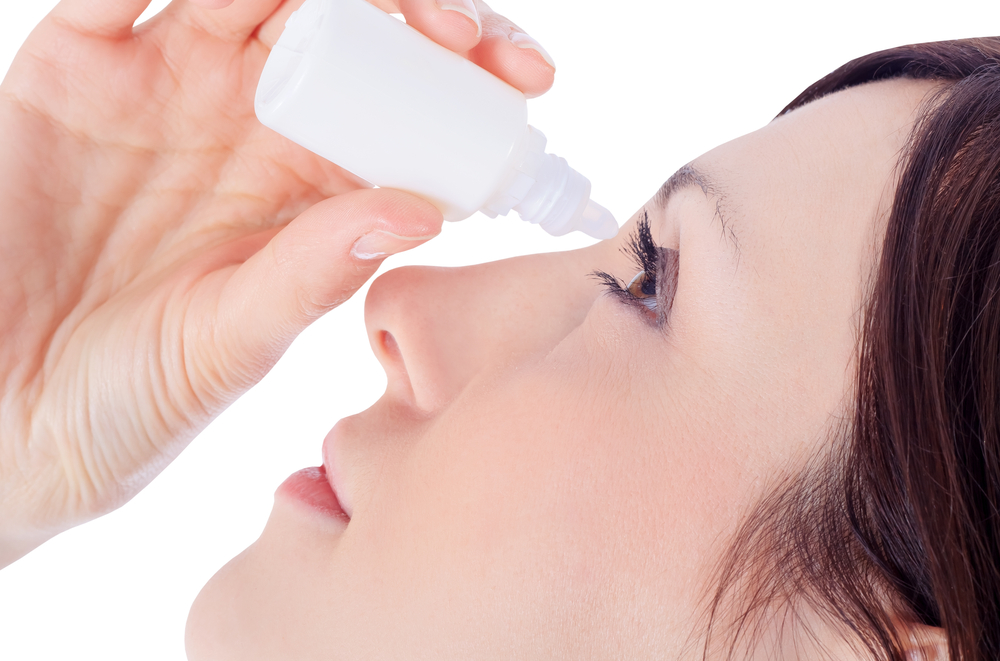LO2A Drops Lessen Dry Eye Symptoms, Even Outperform Systane on Some Measures
Written by |

Wize Pharma‘s LO2A eye drops result in clinically meaningful improvements in dry eye signs and symptoms in people with Sjögren’s syndrome, topline results from an exploratory Phase 4 trial show.
The treatment continued to demonstrate a good safety profile, and was found to be at least as effective at easing corneal damage as the Systane Ultra UD over-the-counter lubricant — meeting the trial’s (NCT03319420) primary goal.
Moreover, across several other efficacy measures, LO2A appears to outperform Systane.
“We are pleased with these topline results, especially given the clinical improvement in signs and symptoms. Sjögren’s patients that are suffering from dry eye tend to develop severe dry eye, and we believe LO2A has clearly demonstrated its ability to improve both signs and symptoms of these patients,” Noam Danenberg, CEO of Wize, said in a press release.
“LO2A appears to be a promising proposition to this sub-group of patients and in-line with the growing need for personalized treatment,” Danenberg added, noting that Sjögren’s patients with dry eye currently have no approved treatment available.
“This data supports our plans to monetize our rights in the LO2A technology,” Danenberg said.
The eye drops — produced in sterile, single-dose vials to minimize the risk of infection and contamination — were developed as a replacement for natural tears, to moisten and protect the eyes.
The treatment has been available to people with dry eye syndrome in Israel and several European countries for more than 10 years. But except for Hungary and the Netherlands, this approval does not cover its use for dry eye symptoms caused by Sjögren’s syndrome.
The Phase 4 trial, conducted across five clinical sites in Israel, was designed to determine whether LO2A eye drops could improve the signs and symptoms of dry eye in people with the autoimmune disease.
Since LO2A was already approved in Israel for people with dry eye, the trial was considered an exploratory post-marketing study.
A total of 69 people with Sjögren’s, who were experiencing symptoms of dry eyes, were randomly assigned to either LO2A or Systane Ultra UD eye drops, applied four times daily in each eye, for three months.
The study’s primary goal was to evaluate whether LO2A was as effective as Systane at lessening corneal damage, as measured by changes on the National Eye Institute/Industry (NEI) Industry Grading System after three months. The scoring varies from zero to 18, in which greater scores reflect more severe eye damage.
Secondary goals included reductions in conjunctival damage and improvements in eye health and quality of life, assessed through changes in the Ocular Surface Disease Index (OSDI) questionnaire and the Visual Analogue Scale (VAS) score after one and three months of treatment. OSDI and VAS scoring both vary from zero to 100, with higher scores representing greater disability.
Clinically significant improvements were defined as a reduction of three points in the NEI scoring system, a reduction of 30 points in VAS, and of 10 points in OSDI.
Topline results showed that the trial met its primary goal, with LOA2 eye drops being non-inferior to Systane Ultra UD at easing damage to the cornea — the eye’s outermost layer — at the end of the three months.
In most other measures, LOA2 not only was not inferior, it appeared to be superior to the over-the-counter eye drops.
In fact, more patients receiving LOA2 (100% vs. 90%) experienced clinically meaningful improvements in at least one of the primary and secondary measures after three months of treatment. In addition, 74% of participants given LO2A drops showed both a reduction in corneal damage and an improvement in secondary measures, compared with 59% of those in the control group, who received Systane.
LO2A drops also showed an advantage in the group of patients with primary Sjögren’s syndrome. A total of 11 patients in this group were given LO2A while 17 were on the control treatment. Damage to the conjunctiva, the tissue lining the inside of the eyelids, was reduced by an average of 4.1 points in those given LO2A drops, compared with an average 2.7 points in the control group — a 52% difference.
These patients also experienced greater reductions in their eye dryness scores in the VAS scale when given LO2A (an average reduction of 37.4 points) than when assigned the Systane Ultra UD eye drops (average reduction of 21.4 points). There was a difference of 75% between the two groups, the results showed.
Finally, LO2A’s safety profile was in agreement with that seen in prior trials, without major adverse events or side effects reported.
“Dry eyes are typically one of the most bothersome symptoms associated with Sjögren’s syndrome,” said Penny Asbell, MD, chair of the department of ophthalmology at the University of Tennessee Health Science Center.
“This subpopulation of dry eye is often especially bothered by ocular discomfort, blurred vision, and visual fatigue affecting their quality of life, and with little specific treatment to address their symptoms,” said Asbell, who serves as the director of the Hamilton Eye Institute.
“The LO2A clinical trial is an important step in finding new treatments for dry eye associated with Sjögren’s,” she added.
The eye drops, approved for treating dry eye in people with Sjögren’s in Hungary, are marketed there as Conheal by Resdevco. In the Netherlands, where the drops also are approved for the disorder, Pharma Stulln markets them as Hylan.





